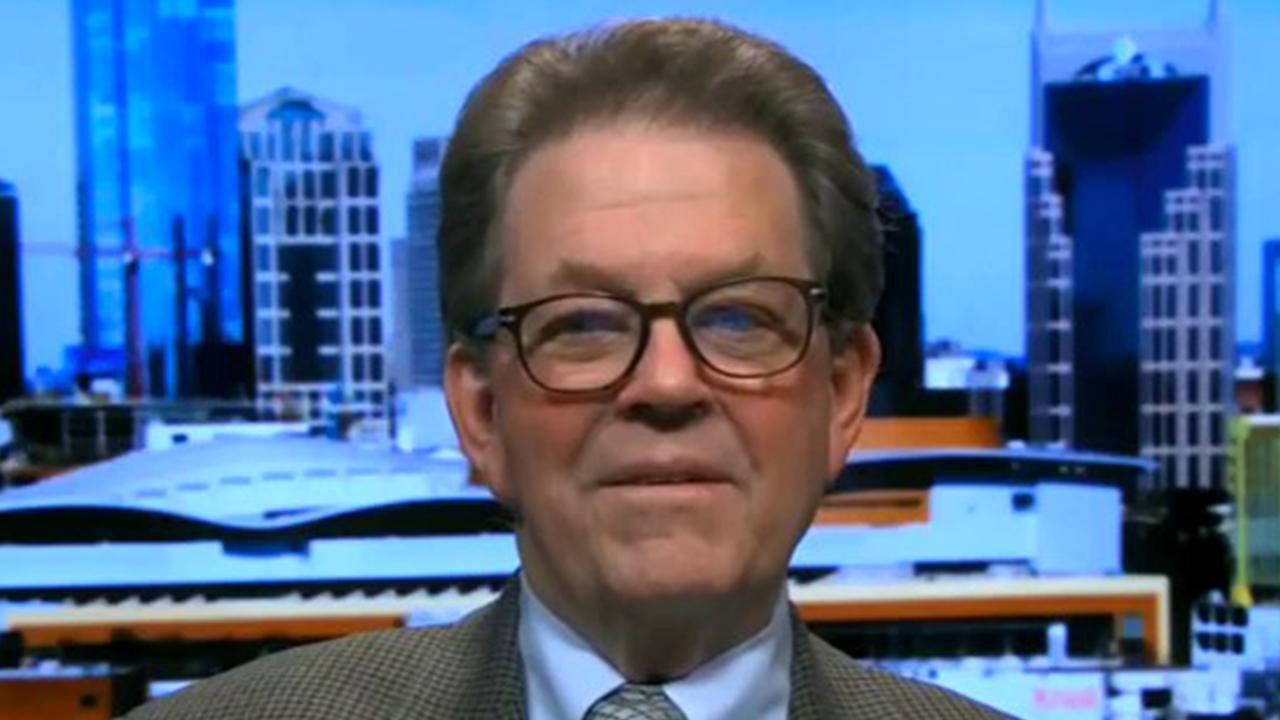A payroll tax waiver, wage subsidies make most sense as stimulus: Art Laffer, Jon Hartley
Why not deliver a faster and less operationally challenging stimulus through the payroll system?
Get all the latest news on coronavirus and more delivered daily to your inbox. Sign up here.
As we're already quickly discovering, there are several operational and implementation challenges we've encountered while delivering seriously needed trillions of CARES Act relief in a timely manner to the American people amid the COVID-19 outbreak and economic shutdown.
The Small Business Administration’s (SBA) Paycheck Protection Program’s (PPP) forgivable loans are still taking time to make their way to small businesses through the banking system. The Fed is still setting up its new credit facilities and many Economic Impact Payments (one-time checks from the IRS) still won't arrive for weeks in the mailbox.
THE SMALL BIZ LENDING PROGRAM RUNS DRY
Expanded unemployment insurance claims are generally being delivered much faster (although some states have computer infrastructure challenges) but have the potential challenge of incentivizing employee separation given how generous the new claims are (the CARES Act delivers an extra $600 per week from the federal government on top of lost wages).
Why not deliver a faster and less operationally challenging stimulus through the payroll system that will incentivize employers to keep their workers on payroll and for them not to leave?
WHITE HOUSE CONFIDENT DEAL TO FUND PPP WILL BE REACHED NEXT WEEK: SOURCE
That is exactly the idea behind a negative payroll tax wage subsidy, which would not only bring the payroll tax to zero (which some argue provides too little relief) but bring it down further to become a direct payroll wage subsidy (or “negative payroll tax”).
Both employers and employees would both receive money from the federal government on a biweekly basis instead of having to pay the government a certain percentage of wages in payroll tax.
The beauty of a payroll tax waiver or payroll subsidy for both employer and employees is that it doesn’t have to go through inefficient government and banking administration which add significant costs.
FOOD BANKS STEP UP AMID CORONAVIRUS CONCERNS
The CARES Act (Phase 3 stimulus bill) does provide the Employee Retention Tax Credit, a payroll tax credit equal to 50 percent of certain wages paid by eligible employers, with a maximum tax credit of $5,000 per employee.
The spirit of this provision is good but could go much farther.
Along these lines, Senator Josh Hawley, R-Mo., has now proposed a payroll tax rebate that covers 80 percent of payroll expenses while Canada and the UK are now implementing wage subsidies where employees receive 75 percent and 80 percent of their paycheck respectively albeit in the form of tax credits.
A recurring biweekly payroll subsidy (rather than a one-time tax credit) would be faster and likely help boost spending because of what behavioral economists call "mental accounting," that is people are more likely to spend something that they see as a permanent income boost to their income.
If the payroll tax cut wage subsidy is temporary, it would incentivize people and businesses to work a lot harder right away as they return to work to take advantage of the tax abatement before it disappears, say before the end of the year.
CORONAVIRUS RELIEF IS NOT HELPING RESTAURANTS, INDUSTRY WARNS
Fast implementation could be achieved quickly with the help of private payroll processing firms like ADP and Paychex.
Wage subsidies are not without costs in both fiscal costs in the form of labor market disincentives. The real problem with a wage subsidy like the earned income tax credit is that the subsidy is removed as a person’s income rises, thus creating a disincentive to work at certain income levels.
Milton Friedman famously dedicated a whole chapter to "Negative Income Taxes" in his 1962 bestseller, "Capitalism and Freedom."
Unlike the 1970s' negative income tax experiments which had the demonstrated impact of discouraging work, paying employers as well as individuals to stay together by removing downward wage rigidities in a negative payroll tax framework would not have such concerns if it had relatively little means testing and long phaseouts.
GET FOX BUSINESS ON THE GO BY CLICKING HERE
We hope this idea is something that Congress considers as it decides how to deliver continued economic relief to Americans suffering economically that will also help to aid a fast recovery where employers and employees that were together prior to the crisis stick together.
If not, we may want to keep a payroll tax waiver or negative payroll tax in the policy toolbox for the next time a pandemic or economic crisis rolls around if we want to respond in an even faster manner.
Arthur B. Laffer is Chairman of Laffer Associates and a member of President Trump’s economic recovery task force.
Jon Hartley is a Master's Candidate in Public Policy at the Harvard Kennedy School and previously was a senior policy advisor at the U.S. Joint Economic Committee.






















